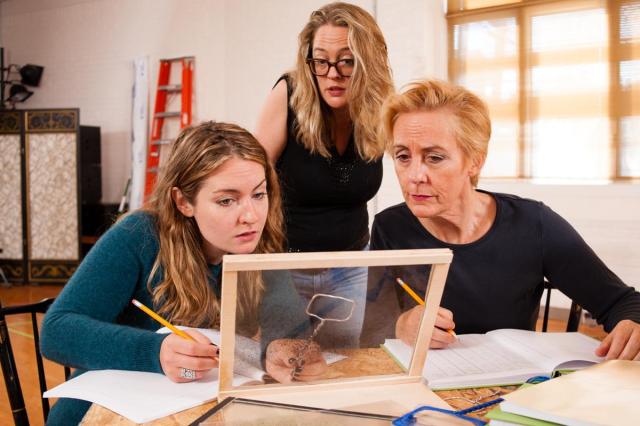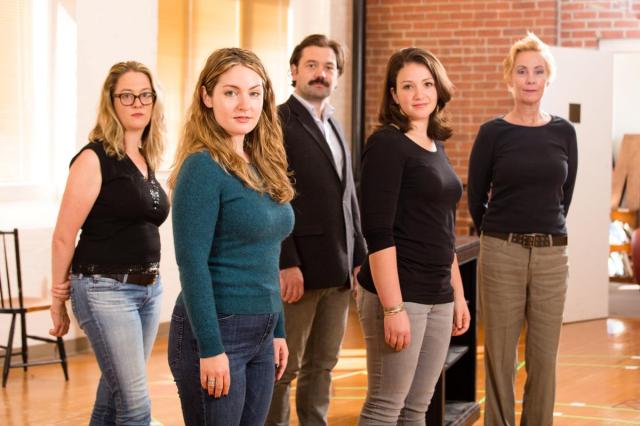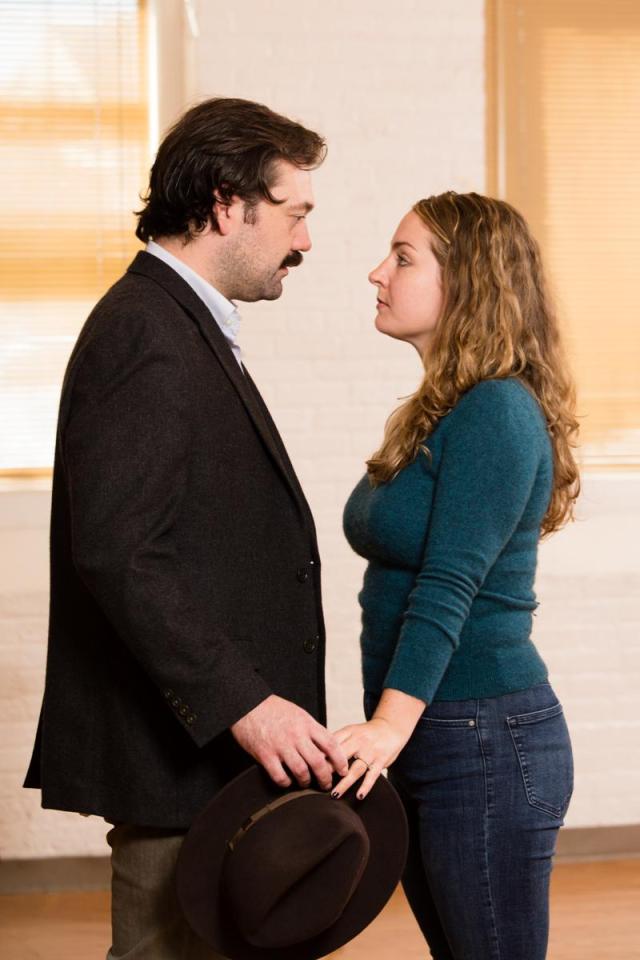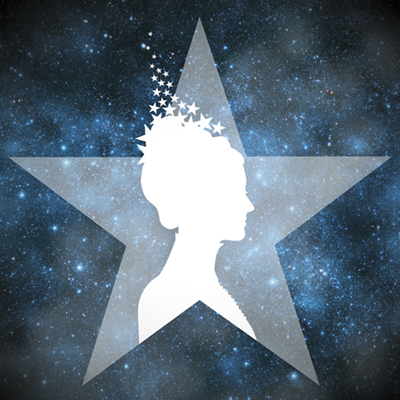Submitted by Merrimack Reper... on
How and when did you first learn about Henrietta, and what about her story really interested you?
I found a book about her – a very thin volume – called Miss Leavitt’s Stars. It was on a table of books in the basement of the Strand Bookstore in New York. I kind of collect stories of women scientists and I didn’t recognize the scientist, a woman named Henrietta Leavitt. And with further investigation I realized this could be a play, not just because the history was interesting and the science was interesting, but because there were such great metaphors that could be made theatrical. The math and music being of a similar root, and the feminism and activism of that time, the sisterhood, light and pattern. And because we don’t know a ton about Henrietta, and for a playwright that’s good news in some cases, so I can make up some of the fun stuff. [Laughs] But most of this is based in truth.
What is it that has you collecting stories of women scientists?
A lot of it is because I’ve found for a long time that science makes great theater; it’s very dramatic. There are moments of discovery, there’s eureka moments, you can stage them, you can embody them, you can hear and see them, and it’s very actable. Science may not seem like an obvious choice to put on stage over and over again, but for almost two decades I’ve found so much inspiration in the stories of science – especially women scientists, because the deck is stacked against them more than men. They have more to prove, more at risk, and the presumptions are so constant against them, so their victories and triumphs are sweeter. Over and over again I find stories of women so compelling, and I just can’t not write a play about them, and Henrietta was one of those.

You’ve talked about why stories about science make good theatre. What makes theatre good for science?
Because I’m not a scientist I’m not the best person to answer, but several of my friends are and my husband is a scientist. And I do think that any artform comes out of a desire to see the world differently, to interpret it and explore it in a way that regular life doesn’t encourage. That would seem to be good for scientists – thinking differently, seeing through somebody else’s perspective, experiencing the human condition in an alternate way. I think it helps creativity, broadening awareness, and making emotions more acceptable; there are emotional truths that are just as important as intellectual truths, so I hope that’s part of it. I also think there’s great community building and cohort building in theatre: we’re all coming together in one place to watch a story. And if it’s a play about science, oftentimes scientists are invited to give talkbacks and be part of the show, and I think that does a lot in terms of continuing to make sure that citizens have access to scientists and stories of science, so that it doesn’t feel like something happening in a lab that doesn’t impact everyday life. Hopefully plays about science bring more awareness to the humanity behind science and how necessary and urgent the work of science still is.
There’s an accessibility that art gives to stories. It seems like people find science topics remote in a way.
Yeah, it adds heart to a field that’s often described as cold and practical. But especially now – not to make everything about Trump, but the administration is cutting science funding left and right – stories like this remind us of the pattern-breaking, huge shift that science gives us in terms of our ability to understand ourselves and save ourselves. And that’s massively important – critical – to our society. And stories of science – and women in science, people of color in science, and on and on and on – makes it even more important for us to hear those stories now.
You’ve talked about how there’s a lot of blanks in what we know about Henrietta, but that you feel that the play is still very much rooted in truth, and that the question of truth is a huge part of the actual narrative. When you’re adapting a story like that, how do you decide what the most important moments of truth are? And where you get to bend and be creative?
The main thing is to tell an unforgettable story, so whatever I have to do for that is generally what I try to do. But if you’re telling a story about science, the science has to be right, and the historical events of note must stay accurate. When Einstein’s papers were discovered, and the access the women would have had to that knowledge, that remains the same. The suffragette movement and the way women were treated in society, all of that is accurate. What I shifted are some of the personal details of Henrietta’s life to help tell the story that I wanted to tell and hopefully help make it more unforgettable. Henrietta’s mother was actually more like the role I’ve created as her sister; that relationship would have made an excellent play on its own, but it wasn’t the play I wanted to write. I wanted to write about literal and figurative sisters, so giving Henrietta a sister that could complement her experience with a more traditional life was important to me. And then there’s a lot of stuff that we don’t know. She did write a letter from an ocean liner, so we know that she went on one. I don’t know where, what her experience was, or why she did it – all of that is the fun I get to have as a playwright. And the male character is kind of an amalgam of lots of the male scientists there at the time: not choosing one person, but creating a love story for her. We don’t know that it happened, but we don’t know that it didn’t. [Laughs]

There are so many women in the play, and they each seem to have a different type of journey. How do you weave all of those together into one story?
That’s the work of a good play, right? To have some converging but independent journeys for each of these characters. If this were a play about men, we wouldn’t question it, but you have to note it if it’s a play about women. Oftentimes we’re given one character, maybe two, but certainly not a handful of complex, individual women that are after different things and on different journeys. So that was the joy and, frankly, the liberation of writing a play like this: I got to tell the story of friends and sisters and colleagues and activists and scientists – and they’re all women! It’s so cool! [Laughs] So yeah, I think part of what the work hopes to do is show that diversity of female experience, that of course you can’t write a play with one woman in it and have them represent all of womanhood, just like you couldn’t do that with a man. So hopefully it’s a good example of the diversity of experience.
Why did you think it was important to include Henrietta’s hearing aid in the stage directions?
Henrietta and Annie actually both had hearing loss; Annie Cannon had a hearing aid as well. But then it felt like this would be a play about deafness, and I don’t feel quite equipped to write that, so I just gave Henrietta the hearing loss. I think it’s quite important to show somebody that has a different ability on stage. And for her, oftentimes they said that she would take the hearing aid out when she was working, which would give her much more concentration than some of her colleagues: you know, working in a small room with twenty women and men up and down the stairs outside. So in some ways her disability was an ability, which was really interesting.
The last time that MRT audiences saw one of your plays was in 2015 with I and You. What were the different challenges in writing Silent Sky versus that play?
Silent Sky came first, so I and You was a divergence for me, and it still really is. I write a lot of history plays, a lot of stories of women in science in different decades, and I and You was – and still is – a really unique play of mine. It’s contemporary and dramatic and has a big twist and is about teenagers; it’s kind of a music box of a play that appears small and kind of bursts open at the end. So they were completely different processes, but in both cases I knew where the story was going before I wrote it. I knew where we were going to end up. And for Henrietta, because I have history to guide me, I knew what her discovery would be, and how it would look, and how it would exist in the theatrical imagining that was my job to figure out how to put on stage. And with I and You, because there was kind of a secret at the heart of the play, it was really setting up and hopefully earning this big ending I wanted to try and pull off. But they’re both about love, right? And they’re both about loss, and they’re both about resilience and needing to be known by your friends and the people you love, and kind of in some ways about the awe of the universe, of the way the world can actually work. Very different kinds of awe, but still, I think there are a lot of similarities to a lot of my work that kind of land in those categories.

What about this story felt like it would uniquely work for the stage, and how did you take the story and craft it into something really theatrical?
It’s about pattern and repetition and tone, and I realized that those things could be made musical, so then I put music as a thread in this play – her sister is a pianist and plays at the church, so a hymn would of course be quite common for her to play. But then what if the music becomes how we articulate this scientific discovery? It was stuff like that started as an ancillary element of the story that became this sort of essential core element of how to tell it on stage. And it’s what I’m actually most proud of in some ways: how it allows science to be more than fact, how it makes science visceral, and it makes it beautiful, and those I think are really important. It will be rare for some people to walk away being like, “Wow, that astronomy was the most gorgeous thing I’ve seen in a long time!”
And of course the element of light: it’s a play about stars, so how does lighting play into the scene. I’ve seen this production done in a thousand different ways, all sorts of manner of interpretation while consistently asking its designers to really innovate.
So the musical aspect of Henrietta’s discovery, that was from history?
Well, the discovery itself is in some ways musical – you can think of it as music. But the discovery that she made was probably decidedly non-musical: partly because she was deaf, but also because it was math, it was nothing but math for her. But the idea that math can also be musical if you’re someone like her sister Margaret, who is a musician so can interpret the same data in a different way. I also kind of like that, that pattern can be mathematical or musical.
You’ve had the pleasure of being able to see so many productions of this work. What are you looking forward to most about Sean and his team and their vision?
What I love about Sean’s genius as a director is that his productions are always so full of heart, but also so full of wit and humanity. He’s just one of the funniest directors I’ve ever worked with. He knows how comedy is one of the pillars of humanity and human interaction, and it’s not about being funny, it’s about being real. So I think that is something I’m really excited to see with this play, which when people hear about it, they’ll probably think it’s pretty serious, right? It’s turn of the century women, they wear those high collars and corsets and they’re talking about math and this sounds like no fun at all, right? [Laughs] But Sean is so good at making the human experience beautiful and funny and honest. So I think that’s going to be just extraordinary.

Silent Sky runs October 18 – November 12
mrt.org/sky
